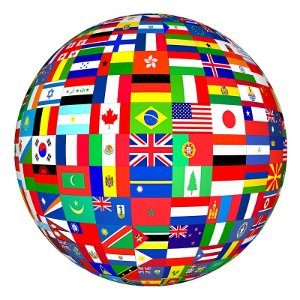| Home » Articles » Delivery Tehniques |
What is relevant to them? When I recently spoke at two conferences in Africa, I discovered that there is another, more fundamental layer of audience needs to consider as well. In this article, I will share the lessons I learned about basic communication issues when speaking to a culturally distinct audience.
Tip 1: Don’t Assume They Can Understand YouAlthough English is the official language of business in both places I spoke (Nigeria and Kenya), their English is more formal, flowery, and structured than casual, American English where we regularly use contractions (e.g. can’t, mustn’t, would’ve) and drop the endings on words (e.g. are you comin’ to the party?). To enhance the audience’s ability to understand you, speak clearly and articulate carefully. Minimize your use of contractions. Check with the audience to see if they understand; encourage them to interrupt you if they do not. Tip 2: Be Cautious of Cultural JargonLocal terminology, popular culture references, and humor likely will not translate. If they don’t, the point you’re trying to make is lost on the audience. Humor from your culture may even be offensive in other cultures. Things you are very familiar with (e.g. Starbucks, Seinfeld, online banking) may not have any meaning to your audience. For example, in part of my presentation in Nigeria, I was talking about various social media tools and quickly found that, although Facebook is popular, LinkedIn is not widely recognized there. If you want to use a cultural reference in your presentation, do some research and find a local one that will resonate with the audience. If you must use one local to your culture, explain it. Avoid jargon and slang. If you use acronyms, spell them out. Tip 3: Be Adaptable to Local Style“Speaking in another country to people from another culture is an amazing experience. Do your homework, incorporate a few modifications into your presentation, and eagerly embrace any opportunity that comes your way.” In my presentation skills training classes I teach people not to open their presentation with the standard “I’m so happy to be here”, but instead use those precious first moments to grab the audience’s attention with a powerful, on-message opening. When I speak, I follow my own advice. However, in both Nigeria and Kenya, openings were uniformly formal and almost ceremonial. In Nigeria, as the only Western, white person in a room of 350 people, I felt it was much more appropriate to abandon my normal style and open my remarks by telling the audience that it was my first visit to Africa and how honored I was, and grateful to the Board of Trustees, to be a part of their conference. My comments were completely sincere, but style-wise, a little over the top for me. In this case, however, it was the right decision: the audience responded with a huge, welcoming round of applause. Tip 4: Slow DownThis is actually good advice for most presentations, but it’s particularly important in a cross-cultural context. If you have some difficulty understanding your audience speak, because of accents or cadence, they probably have the same difficulty understanding you. The faster you talk, the more difficult you are to understand. If you are being simultaneously translated, speaking quickly also makes it more difficult for the translator. Tip 5: Watch Your Body LanguageGestures (e.g. pointing) or unconscious habits (e.g. maintaining direct eye contact) may be offensive in other cultures. Do your research to determine what’s appropriate and what’s not where you’re speaking. A resource to check is Gestures: The Dos and Taboos of Body Language Around the World by Roger Axtell. It is available from amazon.com for just $11.53. The Bottom LineSpeaking in another country to people from another culture is an amazing experience. Do your homework, incorporate a few modifications into your presentation, and eagerly embrace any opportunity that comes your way. Learning MoreYou can research the cultural characteristics of your audience with these resources: Have you ever spoken to an audience from a culture different than yours? What tips can you share? | |
| Views: 433 | |
| Total comments: 0 | |
 As presenters, we know the importance of focusing on the information and emotional needs of our audience:
As presenters, we know the importance of focusing on the information and emotional needs of our audience: